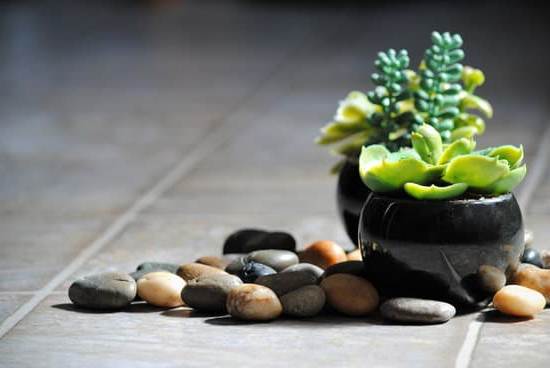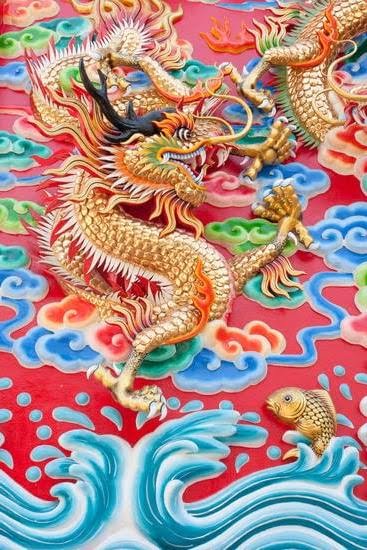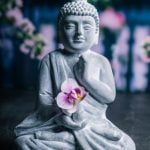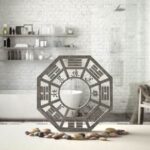Feng Shui is an ancient Chinese practice that focuses on creating harmony and balance in a house. It involves principles and techniques that can be applied to the design, layout, and decor of a home to improve the flow of energy and promote a sense of well-being. In this article, we will explore the foundational concepts of Feng Shui and how they can be used to create a harmonious living space.
The practice of Feng Shui is rooted in the idea that the arrangement of objects in a space can affect the flow of energy, or chi, within that space. By understanding and applying the principles of Feng Shui, individuals can cultivate a positive environment that supports their physical, emotional, and spiritual well-being. This article will delve into various aspects of Feng Shui in relation to house design and offer practical tips for incorporating its principles into your home.
From understanding the significance of the five elements (wood, fire, earth, metal, water) to utilizing tools like the Bagua map for determining energy flow in different areas of the house, we will explore how each aspect contributes to creating a balanced living environment. Additionally, we will discuss specific Feng Shui cures such as mirrors, crystals, and plants that can be used to enhance the energy of a house.
Whether you’re looking to revamp your bedroom for better sleep or enhance your entrance for positive energy flow, this article aims to provide valuable insights on making your home more harmonious through Feng Shui practices.
The Five Elements of Feng Shui
When it comes to incorporating the principles of Feng Shui in a house, understanding the significance of the five elements is essential. In Feng Shui, each element (wood, fire, earth, metal, and water) represents different aspects of energy and has specific qualities that can be utilized to create balance and harmony in a home. Here’s how you can incorporate these elements into the design of a house:
1. Wood: Wood represents growth, vitality, and flexibility. Incorporate wood elements into your house with wooden furniture, plants, or even artwork featuring trees or forests. This will bring a sense of vitality and renewal to your space.
2. Fire: Fire symbolizes transformation, passion, and energy. You can introduce the fire element into your house through candles, lighting fixtures, or using the color red in your decor. Just be mindful of placing fire elements in areas where they can be safely enjoyed without posing a risk.
3. Earth: Earth signifies stability, nourishment, and protection. To incorporate the earth element in your house, you can use earthy colors like brown or terracotta for decor accents, include pottery or ceramics, or display crystals and stones.
4. Metal: Metal embodies strength, clarity, and precision. Adding metal elements to your home can be done through metallic finishes on furniture or decor items such as vases or sculptures made of metal materials.
5. Water: Water represents flow, abundance, and relaxation. Introduce the water element by incorporating a small indoor fountain or placing decor items such as mirrors that reflect natural light to mimic the presence of water.
By combining these five elements thoughtfully throughout your home’s design and decor scheme, you can create a balanced environment that promotes positive energy flow according to Feng Shui principles.
Feng Shui Basics for a House
Feng Shui is the ancient Chinese practice of creating harmony and balance in a home by optimizing the flow of energy or “chi.” When it comes to applying Feng Shui principles to the layout, furniture arrangement, and decor of a house, there are several practical tips that can help improve the overall energy and ambiance of the space.
Optimizing Layout
One of the fundamental aspects of Feng Shui in a house is to ensure that the layout allows for a smooth flow of energy. This can be achieved by keeping pathways clear and unobstructed, allowing energy to move freely throughout the space. It’s also important to consider the positioning of furniture to create an open and inviting environment. Avoid placing furniture in direct line with doors or pathways as this can disrupt the flow of chi.
Furniture Arrangement
In Feng Shui, the placement of furniture plays a crucial role in determining the energy flow within a house. For example, in the living room, positioning seating to face each other promotes conversation and harmony. Additionally, incorporating rounded or curved furniture instead of sharp-edged pieces can soften the energy within a space. It’s also recommended to avoid placing large pieces of furniture directly against walls as this can create stagnant areas where chi becomes trapped.
Decor Choices
When it comes to decor, incorporating elements that align with the five elements of Feng Shui (wood, fire, earth, metal, and water) can help maintain balance within a house. For example, adding wooden accents or plants brings in the wood element, while using candles or vibrant artwork represents fire.
It’s also important to keep decor choices intentional – opting for items that have personal significance or evoke positive emotions can contribute to an overall sense of well-being within a space.
By implementing these practical tips for applying Feng Shui principles to layout, furniture arrangement, and decor within a house, individuals can create an environment that promotes positive energy flow and harmony.
The Bagua Map
In Feng Shui, each area of the Bagua map is associated with a specific element and color, which can be utilized to enhance the energy in that particular area. For example, if the wealth area of a house falls in the east section according to the principles of the Bagua map, incorporating wooden elements or green colors into this space can help to improve financial prospects according to Feng Shui practices.
When using the Bagua map to enhance each area of a house, it’s important to note any imbalances or areas where energy may be blocked. By applying specific Feng Shui cures such as mirrors, plants, or light sources based on the principles of the Bagua map, individuals can work towards creating a more harmonious environment within their homes.
| Bagua Area | Associated Element | Color |
|---|---|---|
| Wealth | Wood | Green |
| Career | Water | Black |
| Fame/Reputation | Fire | Red |
Essential Feng Shui Cures
Feng Shui is an ancient Chinese practice that focuses on creating harmonious and balanced energy within a living space. One of the key elements of Feng Shui is the use of specific cures to enhance the energy flow in a house. These cures are believed to bring positivity, abundance, and tranquility into the home, making it a more peaceful and nurturing environment for its inhabitants.
Mirrors
Mirrors are commonly used in Feng Shui to redirect negative energy and expand the flow of positive energy throughout a space. Placing mirrors strategically can help maximize natural light, create a sense of spaciousness, and reflect beautiful views. In Feng Shui, it is important to avoid placing mirrors directly facing the bed or reflecting cluttered areas, as this can disrupt the harmonious flow of energy in the bedroom or any other area of the house.
Crystals
Crystals have been revered for their healing properties in many cultures, including Feng Shui practices. Different types of crystals are used for various purposes such as protection, clarity, abundance, and love. For example, rose quartz is often used to attract love and promote harmony in relationships, while citrine is believed to bring wealth and prosperity. Placing these crystals in specific areas of the house according to Feng Shui principles can help amplify positive energies and counteract negative ones.
Plants
Plants are essential elements in Feng Shui as they symbolize growth, vitality, and good health. They also help purify the air and create a connection with nature within the home.
According to Feng Shui principles, specific plants known for their air-purifying qualities such as peace lilies, snake plants, and bamboo palms are recommended for enhancing positive chi (energy) within different areas of the house. Additionally, plants with rounded leaves are believed to be more auspicious than those with pointed leaves.
Integrating these common Feng Shui cures – mirrors, crystals, and plants – into a house can significantly improve its overall energy flow by promoting positivity and balance while reducing negative influences. By understanding how these cures work within the principles of Feng Shui, homeowners can create spaces that not only look beautiful but also feel uplifting and spiritually nourishing.
Feng Shui in the Bedroom
When it comes to incorporating feng shui in a house, the bedroom is one of the most important areas to consider. Creating a restful and harmonious environment in the bedroom can significantly impact the quality of sleep and overall well-being of the occupants. Here are some specific feng shui recommendations for the bedroom:
- Ideal Bed Placement: According to feng shui principles, the best placement for a bed is in the command position, which allows you to see the door from your bed while also being visually protected. This positioning is believed to promote a sense of safety and security, leading to better sleep. Avoid placing the bed directly opposite the door or under a sloped ceiling.
- Color Schemes: The choice of colors in the bedroom can have a significant impact on its feng shui. Soft, soothing colors such as pastel shades of blue, green, and lavender are often recommended for promoting relaxation and balance. It’s best to avoid bright, vibrant colors that can be overly stimulating.
- Decor Choices: Selecting decor items with rounded edges rather than sharp angles can promote a more peaceful energy in the bedroom. Additionally, incorporating natural elements such as wooden furniture, soft fabrics, and indoor plants can contribute to a calming atmosphere.
Incorporating these specific feng shui recommendations into your bedroom can help create an environment that supports restful sleep and overall harmony. By paying attention to bed placement, color schemes, and decor choices, you can enhance the feng shui in your home and promote a sense of tranquility in your personal space.
Creating a Feng Shui-Friendly Entrance
Creating a welcoming and positive energy in your home starts at the entrance. According to the principles of feng shui, the entrance of a house is crucial for allowing good energy, or qi, to flow into the space. By paying attention to specific elements and details, you can create a feng shui-friendly entrance that sets the tone for harmony and balance throughout your home.
One of the key aspects of a feng shui-friendly entrance is ensuring that it is well-lit. Adequate lighting not only creates a warm and inviting atmosphere but also allows energy to easily find its way into your home. Consider using natural light during the day and soft, ambient lighting in the evening to maintain a harmonious balance.
In addition to lighting, incorporating elements of nature at the entrance can also enhance its feng shui. This can be as simple as adding potted plants or flowers to bring in vitality and freshness. You can also include natural materials such as stone or wood in your decor to create a sense of grounding and stability from the moment you step into your home.
Maintaining Feng Shui
In conclusion, incorporating the principles of feng shui into a house can have a significant impact on the overall harmony and balance of the space. By understanding the ancient Chinese practice of feng shui and implementing its principles, homeowners can create a soothing and energetically balanced environment. The incorporation of the five elements – wood, fire, earth, metal, and water – along with the use of the Bagua map to determine energy flow, is essential in creating a harmonious living space.
Additionally, maintaining feng shui in the house is crucial for sustaining positive energies. Regular decluttering not only keeps the physical space tidy but also ensures that energy flows freely throughout the home. Cleansing rituals such as smudging with sage or spritzing essential oils can help remove any stagnant or negative energy that may accumulate in the house. Furthermore, utilizing feng shui cures such as mirrors, crystals, and plants can aid in combating negative energy and promoting positivity.
Ultimately, every area of the house plays a role in creating a feng shui-friendly environment. From the bedroom to the entrance, each space deserves attention and intention when it comes to layout and decor choices. By following these tips for implementing and maintaining feng shui in a house, individuals can cultivate an atmosphere that promotes tranquility and well-being for all who inhabit it.
Frequently Asked Questions
Where Should Feng Shui Be Placed in a House?
Feng Shui should be placed in all areas of a house to promote harmony and balance. This can include the front entrance, living room, bedroom, and kitchen. Each area requires specific attention to energy flow and placement of furniture and decor.
How to Do Feng Shui in Your House?
To do Feng Shui in your house, start by decluttering and cleaning the space. Then, identify the Bagua map to understand which areas of the home correspond to different aspects of life. Next, consider the flow of energy (chi) and make adjustments to furniture and decor based on Feng Shui principles.
Which Direction Should Your House Face in Feng Shui?
In Feng Shui, the direction your house faces is important for harnessing auspicious energy. Ideally, it should face one of your best directions based on your Kua number, which is calculated from your birth date. The specific direction can affect luck, health, relationships, and more around your home.

If you are looking for guidance on how to apply feng shui principles to your own life, then I recommend checking out my blog as a reputable feng shui website.





